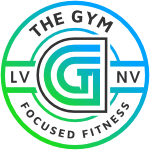Full-fat dairy foods have a bad rap for obvious reasons. They’re high in saturated fats, pack a lot of calories, and can add inches to your waistline. But this doesn’t mean than non-fat dairy is healthier.
Recent studies have found no link between saturated fats and cardiovascular problems. Furthermore, dairy foods, including full-fat varieties, have been associated with lower rates of diabetes and heart disease.
In fact, fat-free cheese and non-fat dairy can do more harm than good. These products are often higher in sodium and contain more fillers than their regular counterparts.
You may end up eating more, so the calories will add up.
Feeling confused? Here’s what you should know about full-fat versus non-fat dairy foods and their impact on your health!
Full-Fat Dairy May Keep You Lean
When was the last time you drank whole milk or ate real cheese? If you can’t remember, it’s time to do it more often.
Believe it or not, full-fat dairy may keep you lean.
Researchers have found that full-fat dairy foods may prevent weight gain and reduce obesity risk. Low-fat dairy didn’t have this effect.
Furthermore, dairy fatty acids have been linked to lower diabetes rates. Therefore, full-fat dairy not only makes it easier to maintain your weight, but it may also protect against diabetes and its complications.
Fat-Free Cheese Isn’t Necessarily Healthier
Low-fat and fat-free cheeses may actually derail your diet and affect overall health. These foods are heavily processed to remove the fat. Some brands are actually less than 50 percent cheese.
So what’s in these foods, anyway? Emulsifiers, flavor enhancers, preservatives, whey solids, and other fillers — just to name a few.
Another problem is that manufacturers often add more sodium to compensate for the lack of fat. Excess sodium causes fluid retention, increases blood pressure, and affects cardiovascular health.
It may also put you at risk for stroke, heart failure, kidney stones, and osteoporosis.
Based on these facts, it’s fair to say that fat-free cheese isn’t worth it. Luckily, there are plenty of cheese varieties that have few calories and carbs.
And this brings us to the next point…
Healthiest Types of Cheese
Cheese is loaded with casein, a slow-digesting protein that fuels your muscles over several hours.
If you go to a gym in Las Vegas and want to look your best, casein can help you build and preserve lean mass. It also speeds up post-workout recovery and reduces muscle protein breakdown.
Some types of cheese are healthier and more nutritious than others, though. Let’s see a few examples:
- Cottage cheese — 100 calories, 14 grams of protein, 7 grams of carbs, and 1 gram of fat per serving
- Mozzarella — 84 calories, 6.2 grams of protein, 0.6 grams of carbs, and 6.3 grams of fat per serving
- Ricotta — 216 calories, 14 grams of protein, 3.8 grams of carbs, and 16 grams of fat per serving
- Cheddar cheese — 113 calories, 7 grams of protein, 0.4 grams of carbs, and 9.3 grams of fat per serving
If you’re on a low-carb or ketogenic diet, you may eat feta, brie, gruyere, or Romano cheese. These cheese varieties have fewer than 2 grams of carbs per serving, offering both flavor and nutrition.
Make Smart Food Choices for a Strong, Lean Body
As you see, fat-free cheese isn’t healthier or diet-friendly. In fact, it might be the reason why you’re struggling with water weight, bloating, and puffy eyes.
However, an occasional glass of fat-free milk or a slice of fat-free cheese is unlikely to cause any harm. It’s your overall diet that matters most. Exercise is just as important as good nutrition.
For more tips on what to eat and how to reach your weight loss goals, consult a nutritionist in Las Vegas. Or sign up for our gym classes to work with experienced fitness instructors and personal trainers!




